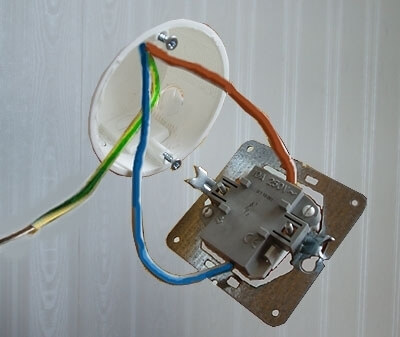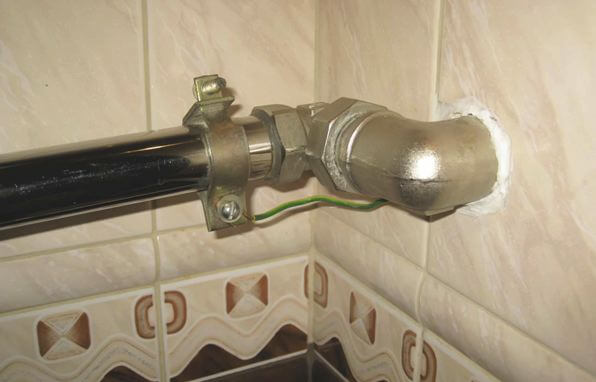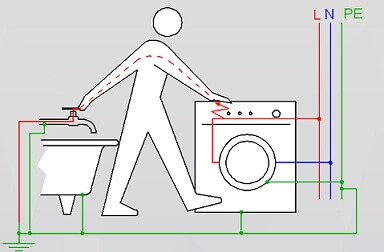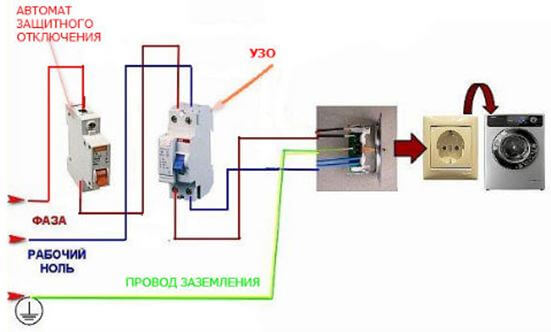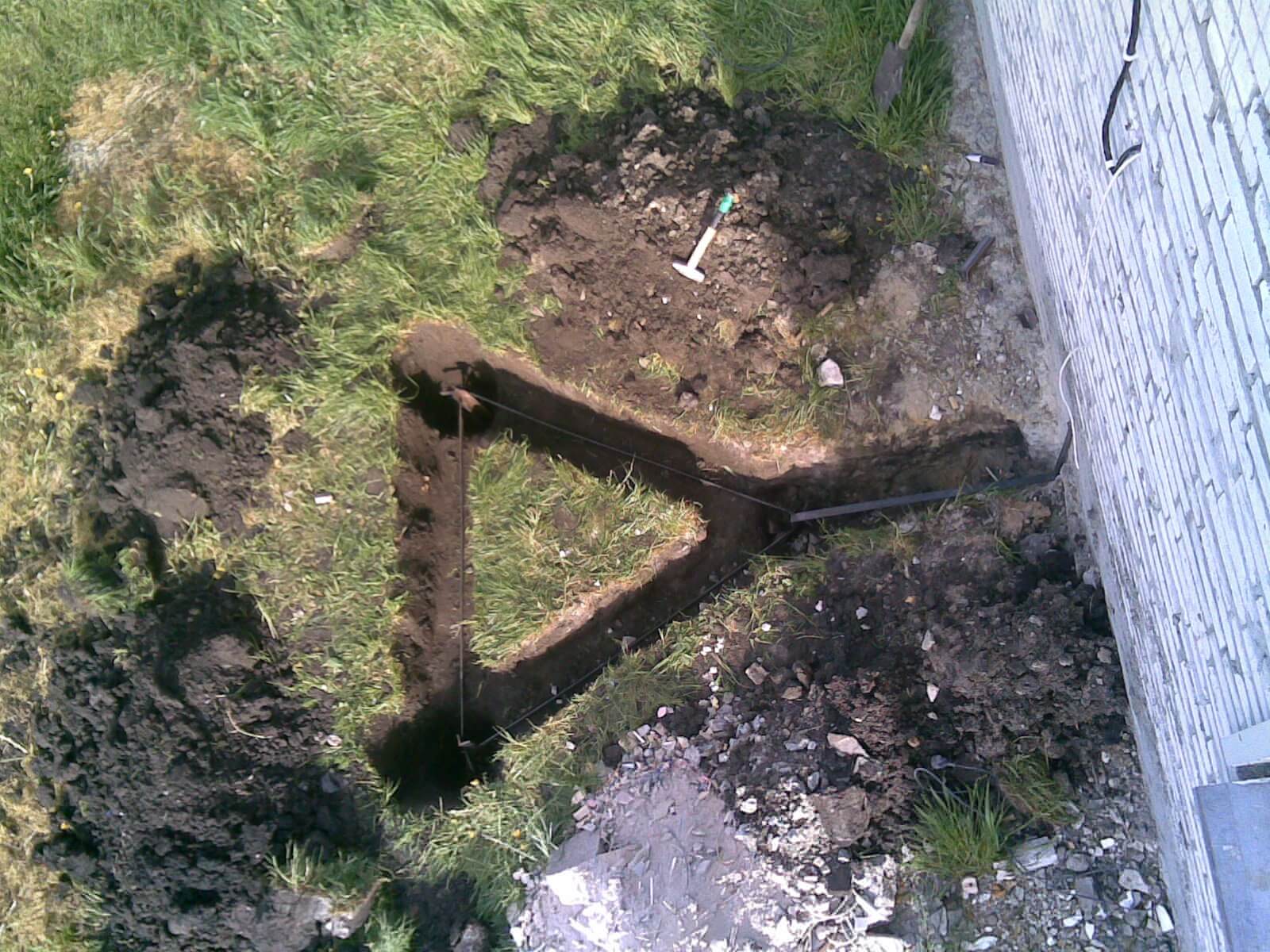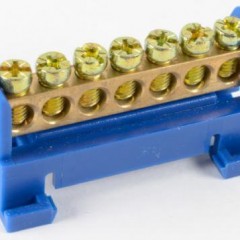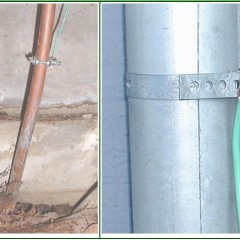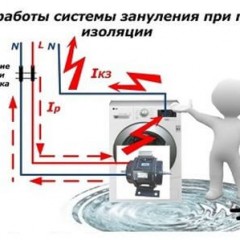How to ground the washing machine if there is no grounding
What is the danger of lack of grounding
With the appearance in a private house or apartment of such a necessary thing as a washing machine, first of all, it is necessary to take care of its safe operation. Because if the connection is incorrect, you can get a significant electric shock by touching the body of the washing machine or ruining sensitive electronics, which is then very difficult to fix.
The fact is that modern household appliances are designed for a three-wire network, which includes, in addition to the phase and neutral conductors, a grounding conductor. But, unfortunately, in an old house or Khrushchev, you can often see only two conductors (phase and zero). Typically, the washing machine is equipped with a surge protector, which is designed to block unwanted current surges with a frequency different from the declared 50 Hz and is connected to the machine body. With two-wire wiring, in the presence of such a filter, a residual voltage of 110V is formed on the housing. Since washing machines are most often installed in the bathroom, the risk of electric shock only increases due to constant humidity.
How to solve the problem
There are several ways to ground the washing machine in the apartment and house:
- connection of the housing to the water supply and sewerage system or radiators;
- output of a separate outlet connected to an electrical panel with grounding;
- creating a potential equalization system for household appliances;
- connection of the residual current device;
- creating your own ground loop (in private households).
It is worth noting immediately that the first option is working and effective, but has a number of significant drawbacks. The fact is that if you close the ground wire to a pipe with water, then after a while it will leak out, risking flooding the neighbors from below. The same goes for radiators and sewer pipes. So it is better to refuse such a method.
It will be more competent to connect to the distribution panel, which is in every apartment building. You can make a separate outlet for the washing machine by forcing a three-wire wire from the shield. Errors in this case may consist in the fact that people often confuse the concepts of grounding and working zero. Do not ground the ground wire to zero.The main thing here is not to confuse and connect each core to the corresponding bus, otherwise you can get a short circuit with all the ensuing consequences. As an option, you can throw a copper wire only from the ground bus and ironly "plant" it on the body of the washing machine. But the first option is more aesthetic and correct.
When using protective automatic power off, the main potential equalization system must be implemented in accordance with 1.7.82 of the EMP, and if necessary, an additional potential equalization system in accordance with 1.7.83 of the EMP (see Chapter 1.7 of the EMP).
Principle of operation potential equalization systems consists in the fact that the cases of all metal household electrical appliances and components, including the washing machine, are interconnected by conductive conductors. In this case, the potential is evenly distributed between them, and by the principle of least resistance will pass the human body. This scheme is quite simple and can be done independently.
Also, a way out of the situation if there is no grounding or if a two-wire wire can serve as the connection of the so-called RCD, i.e. residual current circuit breakers. The principle of its operation is based on a higher sensitivity to leakage currents and faster response relative to circuit breakers. This device has saved many lives. Since, during a breakdown on the machine body, the RCD detects a change in the value of currents in the phase and zero conductors, and due to a change in the induced magnetic fluxes in the core, it immediately works.
This option is currently the most common and safe among all of the above. In addition, it fully complies with all the requirements and rules of electrical safety.
In the event that you want to ground not only the typewriter, but also a private house in which there is a two-wire electrical circuit, you need to make your own circuit to which you can connect the grounding conductor and stretch it to the input shield. To do this, you will need to dig a ditch near the house in the form of an equilateral triangle, each side of which should be at least three meters long and about fifty cm deep. One of the peaks should be directed towards the house, as shown in the photo below:
Then, on the tops, metal pins, 3 m long each, are clogged into the ground, which are welded together by a metal strip. After that, you need to dig a groove under the cable from the resulting circuit, which connects to it and goes to the shield. Naturally, all this must be covered with soil. Here, in fact, grounding of a private house and done.
Finally, we recommend watching a video that clearly shows what the danger is when the washing machine is not grounded:
In conclusion, I would like to note that you can do the grounding of the washing machine with your own hands (provided that they grow from the right places), since there are many photos and videos on the subject on the Internet. However, nevertheless, it must be remembered that electric current does not forgive inattention. Therefore, if there is any doubt, it is better to contact a specialist.
It will be useful to read:

